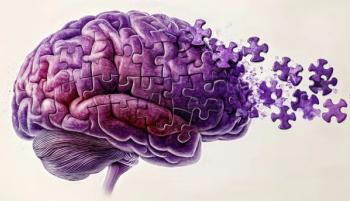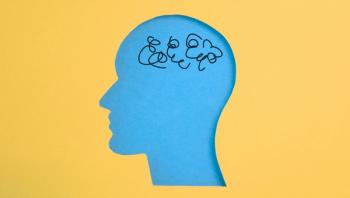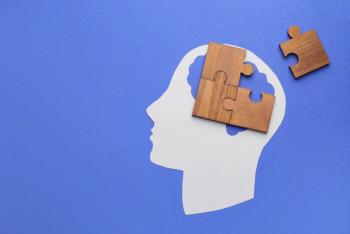
Diagnosing Dementia: Essential for Prognosis, Treatment, and Potential Cure
Defined as a clinical syndrome involving progressive deterioration in multiple areas of cognitive functioning, dementia is a major cause of disability, institutionalization, and increased mortality among the elderly. Although it can occur in younger persons too, dementia is typically associated with aging. It is often seen as a disease that cannot be prevented or cured. However, there is increasing evidence that some types of dementia can be successfully treated or even reversed.
Defined as a clinical syndrome involving progressive deterioration in multiple areas of cognitive functioning, dementia is a major cause of disability, institutionalization, and increased mortality among the elderly.1 Although it can occur in younger persons too, dementia is typically associated with aging. It is often seen as a disease that cannot be prevented or cured. However, there is increasing evidence that some types of dementia can be successfully treated or even reversed.
In the case of the most common senile dementia, Alzheimer disease (AD), treatments are now available that can significantly slow the rate of cognitive decline. Other types of dementia, such as those resulting from vasculitis or other forms of inflammation, can be halted or reversed if they are properly diagnosed and treated in a timely manner.
EPIDEMIOLOGY
Currently, 24 million persons worldwide are thought to have some form of dementia. This number is likely to increase by 100% in the next 20 years as the number of persons older than 65 years doubles from about 500 million to almost 1 billion.1
AD is the most common dementing disorder, affecting approximately 4.5 million persons in the United States.2 Vascular dementia (VaD) is the second most prevalent dementia after AD in persons older than 65 years.1 However, the frequency distribution of dementia subtypes is somewhat different in younger persons.
A study of the relative frequency of various types of dementia among patients younger than 65 years who had been referred to a tertiary center in Athens, Greece, found that of a total of 107 patients with presenile dementia, 38 (35.5%) had AD, and 27 (25.2%) had frontotemporal dementia (FTD).3 Another 15 patients (13.9%) had dementia caused by metabolic deficits, such as folic acid or vitamin B12 deficiency.
The researchers also reported that VaD and Lewy body dementia (LBD), both of which are common in elderly persons, were relatively rare in this patient population (7.4% and 2.8%, respectively). Dementia was secondary to other neurodegenerative diseases in 12 (11.2%) of the patients.
Although AD and FTD accounted for the majority (≈60%) of all cases of presenile dementia, dementia was due to potentially reversible causes in a significant proportion (13.9%) of patients.
DIFFERENTIAL DIAGNOSIS
Dementia may be reversible in a considerable number of patients, not only those under age 65 years.4,5 Therefore, it is extremely important to properly diagnose dementia in patients presenting with steadily deteriorating cognitive functioning.
Neuroimaging is a tool that is becoming increasingly important in the diagnosis and assessment of dementia, according to a recent article by Jennifer L. Whitwell, PhD, and Clifford R. Jack, MD, of the Department of Radiology, Mayo Clinic, Rochester, Minnesota.2 In their article, published in Neurologic Clinics, they describe different current neuroimaging modalities and discuss their advantages and disadvantages.
CT scans are relatively inexpensive, are widely available, and can often be helpful in determining the cause of rapid decline in cognitive function, the authors point out. They note, however, that MRI has a number of advantages over CT in the differential diagnosis of dementia. These include better tissue contrast and resolution as well as the ability to detect focal temporal lobe abnormalities.
Furthermore, MRI does not involve the use of ionizing radiation, which carries some risks, especially when serial studies involving repeated measures over time are required, Whitwell and Jack note. Moreover, because MRI is more sensitive to vascular changes (especially in subcortical regions) than CT, it is better able to identify the typical features of VaD, which include cortical infarctions, lacunar infarcts, and diffuse white matter hyperintensities, the authors contend.
In addition to structural and functional MRI, positron emission tomography and single-photon emission CT are also being used to aid in the differential diagnosis and early detection of dementia. These imaging techniques also can be used to track disease progression and to monitor the effects of various treatments.2
One of the most important developments in the field of neuroimaging in the past decade has been the ability to image amyloid in the brain.2 Amyloid plaques and neurofibrillary tangles are the hallmark pathological features of AD. The ability to identify plaques in living subjects has the potential to revolutionize diagnosis and management, the authors note.
Although in the past neuroimaging of dementia has focused on AD, research is increasingly being done with patients with non-AD dementias, such as FTD, VaD, and LBD. According to a review article by Paul M. Kemp, MD, and Clive Holmes, MD, of the Department of Nuclear Medicine, Southampton University Hospitals Trust, United Kingdom, it is very important to differentiate AD from LBD.6 LBD is the third most common type of dementia after AD and VaD. Differential diagnosis can be challenging because there is considerable overlap in the clinical presentations of AD and LBD, especially during the early stages, the authors note.
Most important, antipsychotics (neuroleptics) must be used with great caution in patients with cerebral Lewy bodies because antipsychotics can provoke a parkinsonian crisis in up to 80% of patients with LBD, which can be fatal in about 50%.6 The first-line treatment of psychotic symptoms in patients with LBD are acetylcholinesterase inhibitors. If antipsychotics are used as the second-line treatment, they should be introduced with extreme caution and at a low dosage.6
IF ALL ELSE FAILS . . .
Despite recent developments in neuroimaging techniques, accurate diagnosis of dementia is often difficult, and a definitive diagnosis before death can only be achieved by examining brain tissue obtained through biopsy. According to an article by Jason D. Warren, MD, of the Dementia Research Centre, Institute of Neurology, University College London, United Kingdom, and colleagues, brain biopsy should be considered in cases of dementia where a specific diagnosis cannot be made by standard noninvasive means.4
Brain biopsy may be especially useful in younger patients, in whom the likelihood of a reversible (usually inflammatory) process, such as isolated vasculitis of the CNS, is relatively high. "This disorder may present as insidious cognitive decline, and diagnosis remains notoriously difficult," the authors observe.
In a retrospective analysis of 90 consecutive cerebral biopsies undertaken for the investigation of dementia in adults referred to a tertiary center between 1989 and 2003, Warren and colleagues found that 57% of biopsies were diagnostic, with most (18%) of the patients having AD. Twelve percent of patients had Creutzfeldt-Jakob disease, and an inflammatory disorder was diagnosed in 9%.
In most cases, biopsy consisted of a right frontal full-thickness resection of cortex, white matter, and overlying leptomeninges, the investigators reported. Complications occurred in 11% of patients and included seizures, wound or intracranial infections, and intracranial hemorrhage, but there were no deaths or lasting neurological sequelae attributable to the procedure.
Information obtained at biopsy influenced treatment in only 11% of patients; however, performing a brain biopsy has other advantages, according to Warren and colleagues. It eliminates diagnostic uncertainty and facilitates informed counseling of the patient's family. Moreover, as disease-modifying therapies for neurodegenerative conditions, such as AD, become available, the value of brain biopsy in the management of dementia is likely to increase, the authors suggest.
Findings of a study presented at the 59th Annual Meeting of the American Academy of Neurology (AAN) in May in Boston also indicate that the potential benefits of brain biopsy outweigh the risks in patients with dementia who had received no clear diagnosis despite being thoroughly evaluated using less invasive means.7 Brain biopsy has a 25% to 33% chance of revealing a diagnosis in an unexplained encephalopathic illness, according to lead researcher Joseph D. Burns, MD, a clinical instructor of neurology at Tufts-New England Medical Center in Boston.
"Although these might not sound like very good odds, when one considers how sick these patients are and how many prior tests were not helpful, these numbers are quite good," Burns told Applied Neurology. "And the benefits [of brain biopsy] all come with a relatively low risk to the patient," he added.
To determine the value of brain biopsies in patients with atypical dementia, Burns and colleagues reviewed the charts of 42 consecutive patients who underwent nonstereotactic brain biopsy at the Lahey Clinic in Burlington, Massachusetts. All patients had indeterminate or normal imaging results, and most (79%) had been symptomatic for less than a year.
The researchers found that 12 (29%) of the 42 biopsies led to a specific diagnosis, while 15 (35.5%) of them yielded results that were normal and nonspecific anomalies were found in another 15 (35.5%). There were only 3 (7%) minor complications, and no deaths or major complications occurred as a result of the procedure.
Overall, 11 patients (26%) received meaningful benefit from the biopsy, 5 (12%) of whom had their treatment significantly altered, the investigators reported. According to Burns, these results imply that a brain biopsy should be strongly considered in patients in whom a diagnosis could not be accurately made despite having been thoroughly evaluated by less invasive means. "A biopsy may be needed to find an etiologic diagnosis because this will allow for a more accurate prognosis, avoidance of potentially toxic therapies for erroneous provisional diagnoses, and in the best case scenario, it will allow for the implementation of a specific treatment," said Burns.
EFFECTIVE TREATMENT?
As the above studies show, differential diagnosis, either by neuroimaging or biopsy, can help reveal the exact type and origin of dementia and may, in a significant number of patients, lead to successful treatment and a reversal of symptoms. But even when a cure is not possible, identification of the type and appropriate treatment of dementia can help delay, and perhaps even halt, cognitive decline, possibly because of the neuroprotective effects of such treatment.
This was the conclusion of Franz Fazekas, MD, of the Department of Neurology, Karl-Franzens University, Graz, Austria, and colleagues, who, in a recent study, found that patients with AD treated with memantine (Namenda) had a smaller loss of hippocampal volume during the study period than those treated with placebo.8 The research was aimed at demonstrating the feasibility and potential contribution of multimodal neuroimaging in the investigation of possible morphological and functional effects of drugs for treatment of AD. Clinical effects obtained in the study were consistent with previous results that found a smaller loss of hippocampal volume in patients treated with memantine, suggesting that this drug may have some neuroprotective effects.
"Our study is the first parallel evaluation of several imaging techniques to monitor the evolution of AD and the possible impact of memantine, under the assumption that it may be neuroprotective," Fazekas told Applied Neurology. He stressed, however, that this was a pilot study, "so the results are more interesting in terms of planning future studies for the evaluation of neuroprotective treatment in AD than for influencing current clinical practice."
Another study, which was presented at the AAN meeting, confirms the long-term efficacy of combination therapy with a cholinesterase inhibitor (ChEI) plus memantine for AD in a real-world setting.9 The research was conducted by a team of scientists led by Alizera Atri, MD, PhD, of the Memory Disorders Unit, Massachusetts General Hospital (MGH) in Boston.
Atri and colleagues analyzed longitudinal data from 521 patients with AD (mean age, 74.6) who underwent serial clinical evaluations at the MGH Memory Disorders Unit. A group of 117 patients had been treated with memantine plus a ChEI, while 404 patients were either untreated or had been treated with a ChEI only. An analysis of changes in various indexes of AD severity during a mean follow-up of 30 months showed that patients receiving memantine and a ChEI experienced significantly less annual deterioration in cognitive abilities than did those in the groups who received only a ChEI or were untreated.
These results provide strong support for combination therapy with memantine and a ChEI, showing significant long-term clinical benefits in real-world patients with AD, Atri told Applied Neurology. "In this large, well-characterized, and prospectively assessed cohort of patients with AD, who received clinical care at our memory disorders unit, the benefits of such combined therapy were significant, with small to medium effect sizes that were sustained for years," he said. "The results also raise the intriguing possibility that combined therapy with memantine and a [ChEI] may actually modestly modify the long-term clinical course of AD."
References:
REFERENCES
1.
Qiu C, De Ronchi D, Fratiglioni L. The epidemiology of the dementias: an update.
Curr Opin Psychiatry.
2007;20:380-385.
2.
Whitwell JL, Jack CR. Neuroimaging in dementia.
Neurol Clin.
2007;25: 843-857.
3.
Papageorgiou S, Kontaxis T, Bonakis A, et al. Presenile dementia: the experience of a tertiary referral centre. Paper presented at: 17th Meeting of the European Neurological Society; June 16-20, 2007; Rhodes, Greece.
4.
Warren JD, Schott JM, Fox NC, et al. Brain biopsy in dementia.
Brain.
2005;128:2016-2025.
5.
Josephson SA, Papanastassiou AM, Berger MS, et al. The diagnostic utility of brain biopsy procedures in patients with rapidly deteriorating neurological conditions or dementia.
J Neurosurg.
2007;106:72-75.
6.
Kemp PM, Holmes C. Imaging in dementia with Lewy bodies: a review.
Nucl Med Commun.
2007;28:511-519.
7.
Burns JD, Russell JA, Cadigan RO. Brain biopsy in the diagnosis of atypical dementia. Paper presented at: 59th Annual Meeting of the American Academy of Neurology; April 28-May 3, 2007; Boston.
8.
Fazekas F, Ropele S, Ebenbauer B, et al. The effects of memantine in Alzheimer's disease patients: a randomised, double-blind, placebo-controlled pilot study exploring the contribution of multimodal neuroimaging. Paper presented at: 17th Meeting of the European Neurological Society; June 16-20, 2007; Rhodes, Greece.
9.
Shaughnessy LW, Locascio JL, Atri A. Real-world clinical effectiveness of combination therapy with cholinesterase inhibitor and memantine in Alzheimer's disease. Paper presented at: 59th Annual Meeting of the American Academy of Neurology; April 28-May 3, 2007; Boston.
Newsletter
Receive trusted psychiatric news, expert analysis, and clinical insights — subscribe today to support your practice and your patients.

















